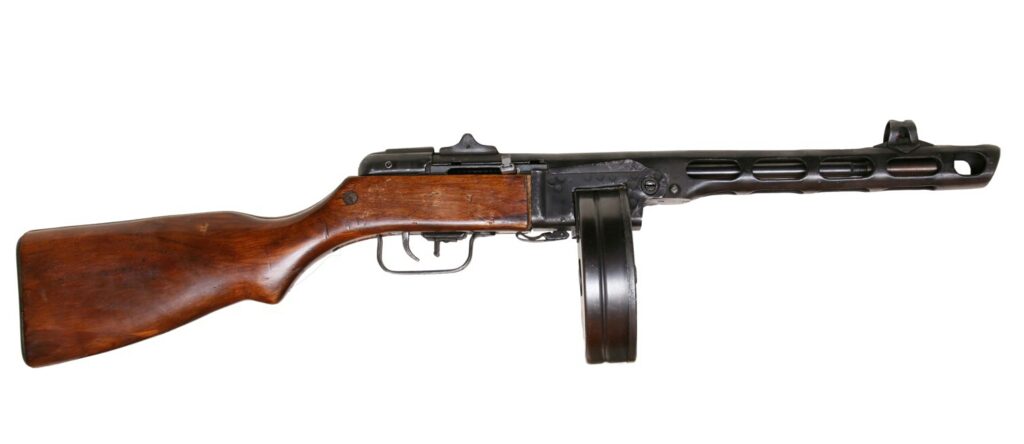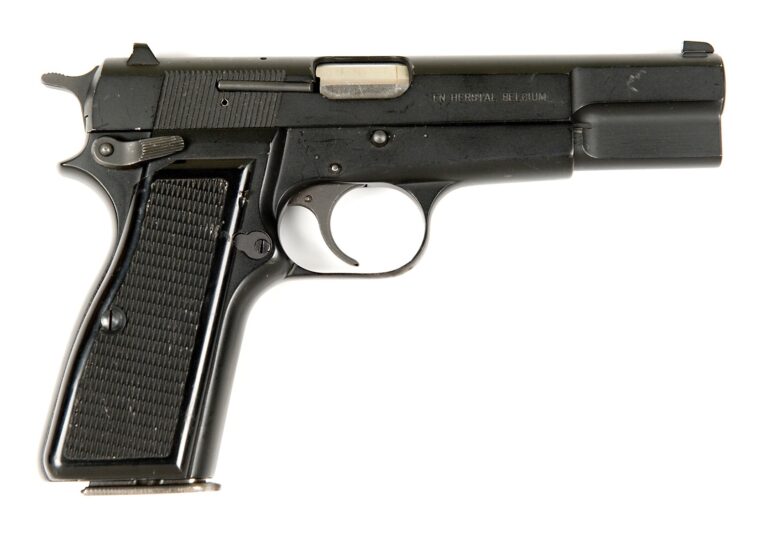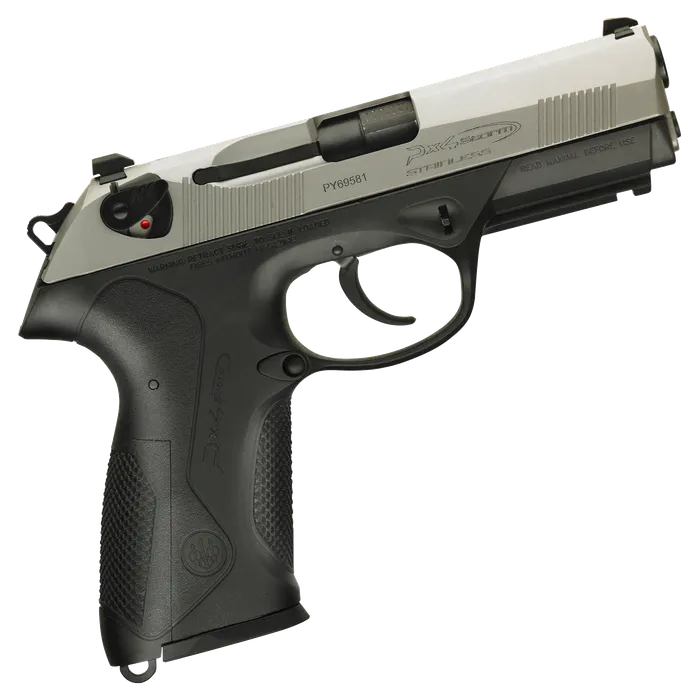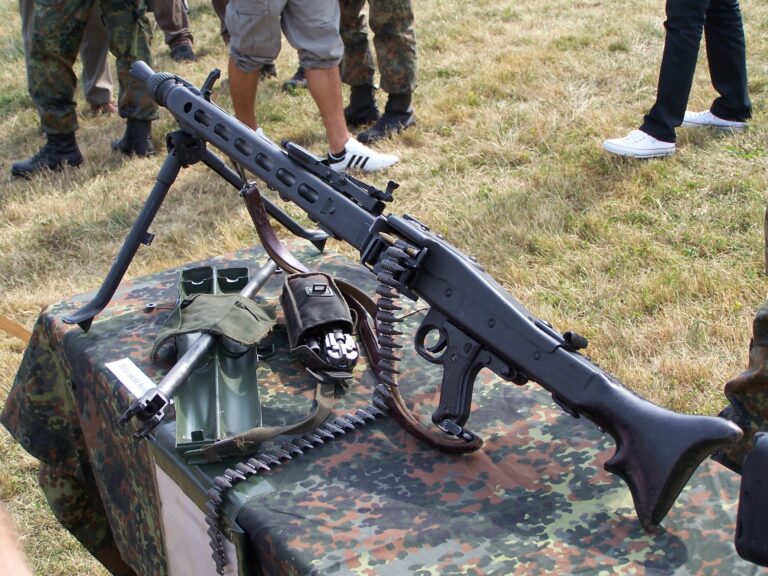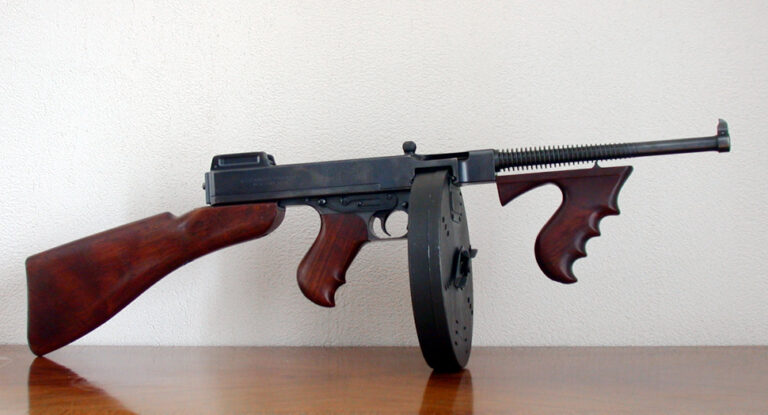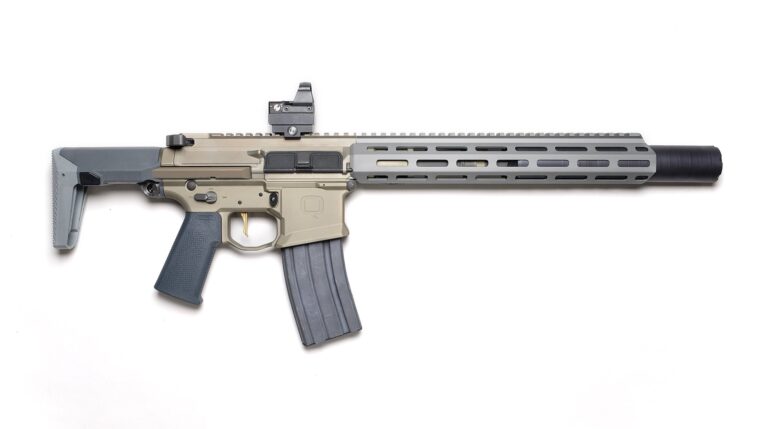Introduction
The PPSh-41(Pistolet-Poulechot Chtourmova modèle 1941) is one of the most emblematic machine pistols of the Second World War. Designed by Gueorgui Chpaguine in 1941, it quickly became theRed Army’s staple weapon, surpassing other models in simplicity of manufacture, high rate of fire and robustness. Produced in millions, it was used not only by the Soviet Union, but also by many other countries after the war.
History of PPSh-41
Background and development
At the end of the 1930s, the USSR was looking to modernize its personal weaponry. The PPD-40, a machine pistol used at the time, was deemed too expensive and complex to produce in large quantities. In 1940, as Germany invaded Western Europe with units equipped with MP 40s, the need for a compact, effective weapon became a priority for the Red Army.
Gueorgui Chpaguine then developed a simple weapon, mainly made of stamped steel, enabling mass production with a minimum of materials and machining operations. Its 71-shot drum magazine, inspired by the American Thompson, and impressive rate of fire made it a formidable weapon in close combat.
The PPSh-41 was adopted in 1941 and quickly became an essential part of Soviet equipment, gradually replacing repeating rifles in many infantry units.
Use during the Second World War
The PPSh-41 played a key role in the major battles of the Eastern Front, including :
The Battle of Stalingrad (1942-1943): Its effectiveness in urban combat enabled Soviet soldiers to compete with the Germans in confined spaces.
The Battle of Kursk (1943): used by assault units in close combat against German armor and infantry.
The Berlin Offensive (1945): equips Soviet troops en masse for the final assault on Nazi Germany.
By the end of the war, over 6 million PPSh-41s had been manufactured, making it one of the most mass-produced machine pistols in history.
Technical data
| Features | Detail |
|---|---|
| Caliber | 7.62×25 mm Tokarev |
| Weight | 3.6 kg (without charger) |
| Length | 843 mm |
| Barrel length | 269 mm |
| Magazine capacity | 71 shots (drum) or 35 shots (curved magazine) |
| Firing rate | 900 – 1,000 shots/min |
| Mechanism | Open cylinder head, blowback |
| Materials | Stamped steel and wood |
Ergonomics and design
The PPSh-41 is designed to be both simple and effective, with several distinctive features:
71-shot drum magazine: Offers impressive firepower, although it’s heavier and bulkier than the 35-shot curved magazine.
Rapid rate of fire: with 900 to 1,000 shots per minute, it outperforms many contemporary submachine guns.
Stamped steel design: Reduces production costs and speeds up manufacturing.
Wooden stock: Provides a stable grip for prolonged bursts of fire.
Barrel with recoil compensator: Improves accuracy by limiting barrel lift.
Comparison with other submachine guns
| Model | Caliber | Firing rate (cps/min) |
| PPSh-41 | 7.62×25 mm | 900 – 1 000 |
| MP 40 | 9×19 mm | 500 – 600 |
| Thompson M1A1 | .45 ACP | 600 – 700 |
The PPSh-41 has a higher rate of fire than the German MP 40 and the American Thompson, making it formidable at close range. However, its recoil is more difficult to control, and its drum magazine can be prone to feeding problems.
Post-war use and influence
After the Second World War, PPSh-41 continued to be used by many Eastern Bloc and Asian countries, including :
Korean War (1950-1953): used by North Koreans and Chinese against UN forces.
The Vietnam War (1955-1975): massive use by the Viet Cong and the North Vietnamese Army.
Various conflicts in Africa and the Middle East: Distributed to numerous revolutionary and guerrilla movements.
It was gradually replaced by more modern models such as theAK-47, but remained in service with some armies and militias until the 1980s.
Conclusion
The PPSh-41 is a symbol of the might of the Red Army and a key element of the Second World War. Designed to be simple, robust and effective, it made history through its mass production and impact on the battlefield. Even today, it remains an essential reference in the evolution of small arms, and a favorite among collectors and military history enthusiasts.

